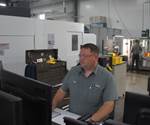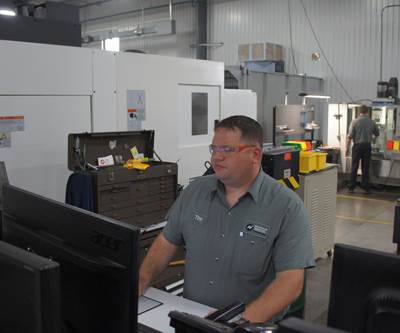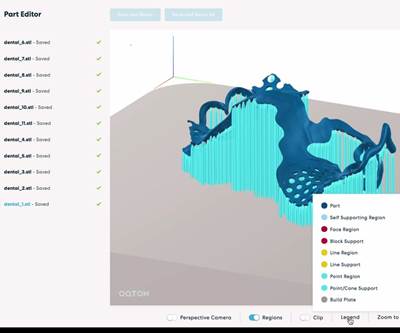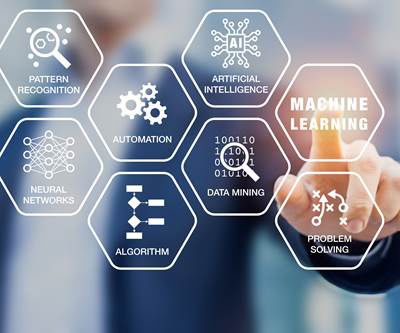Robots Get Hand-Eye Coordination
Artificial vision, touch and intelligence help collaborative robots cope with the unpredictable.
Although Modern Machine Shop focuses on CNC machining, the application pictured here is worthy of attention. Consider for a moment the difficulties inherent in automating a task like inserting Ethernet cables. A host of variables, from differing socket positions to the unpredictable flex of the cord to the level of force required to “snap” the connector in place, might stymie even the most carefully programmed robot. This robot is different in that it eschews careful programming entirely in favor of essentially controlling itself. It is capable of adjusting its approach as needed to ensure a snug fit regardless of the orientation or position of the socket.
Cable insertion aside, the broader implications of giving robots what is essentially hand-eye coordination are not difficult to imagine. If our mechanized coworkers can do this, might they one day help CNC machine shops manipulate a mix of different parts around active deburring tools, or perhaps pick workpieces at random from boxes without grids or other fixtures? Inspection, surface finishing, machine tending and possibly even applications that have yet to be explored all might benefit from such a system.
Developed in Germany by Micropsi Industries, this robot’s auxiliary control system is called MIRAI (Micropsi Industries Robotic Artificial Intelligence). Ituses cameras, force sensors and a neural network to approximate human senses and react to dynamic environments in real time. Rick Schoonover, who represents the company in North America, says some early applications already show good reason to extend ambitions beyond the electronics industry.
For example, one early use case is loading gears into a hobbing machine delicately enough to prolong the life of the arbor, he says. Another uses the system to trim large composite aerospace structures with a constant force level, regardless of the robot’s orientation or location relative to the part surface. Active investigations into picking and precisely placing a variety of different 3D-printed parts also illustrate the technology’s broad potential for automating low-volume, high-mix work.
Programmers don’t “teach” a MIRAI-driven cobot; they train it with skills. The process looks similar in that a human repeatedly guides the robot arm through the motions of the chosen task. However, the arm should approach the target from as many directions and angles as possible. This is because the focus of these machine learning algorithms is not the means to the desired end, but the end itself — cable in socket, for example. As the robot moves, the cloud-based neural network processes the continuous stream of sensor data to gain an understanding of its environment and what is required to accomplish the task.
“If you want to put a peg in a hole, you’re not going to mathematically calculate and execute a sequence of motions,” Mr. Schoonover explains. “If you can see it, you can do it — there’s no path. You’re going to look at the peg, look at the hole, and stick the peg in the hole. If the hole moves, you can adjust to that and put the peg in anyway.”
For now, MIRAI controls the robot only for critical portions of a traditionally programmed path — at the moment of cable insertion, or perhaps gripping or nesting a part. At this point, the robot begins to move on its own based on its own “perception” as well as what it has “learned” about its goals and the natural variance in its environment.
Whether such technology ever makes its way to your shop floor, or whether it is ever employed for more than just micro-movements, remains to be seen. Regardless, technology like MIRAI is changing our understanding of what automation can be: flexible, easy to deploy, and now, apparently, tolerant of variation ranging from environmental disturbances to differences in part shape, position and geometry.
Related Content
Choosing a Five-Axis Machine Tool With Automation in Mind
While much focus is placed on the machinery that moves parts, the features most important for automating five-axis machining are arguably found in the machine tool itself.
Read MoreModern Bar Feeds Bring New Life to Automatic Swiss Lathes
Cam-actuated Swiss lathes are still the fastest way to process many parts. By adding modern bar feeders, this shop has dramatically improved their utilization with the ability to work unattended, even in a lights-out environment.
Read MoreCNC Machine Shop Honored for Automation, Machine Monitoring
From cobots to machine monitoring, this Top Shop honoree shows that machining technology is about more than the machine tool.
Read MoreBuilding an Automation Solution From the Ground Up
IMTS 2022 provides visitors the opportunity to meet with product experts to design automation solutions from scratch.
Read MoreRead Next
AI Demands Meaningful Metrics
Machine learning can identify patterns and trends faster than any human, but correlations are only as meaningful as the data driving the analysis.
Read MoreAI Makes Shop Networks Count
AI assistance in drawing insights from data could help CNC machine shops and additive manufacturing operations move beyond machine monitoring.
Read More10 Takeaways on How Artificial Intelligence (AI) Will Influence CNC Machining
The Consortium for Self-Aware Machining and Metrology held a promising first meeting at the University of North Carolina Charlotte. Here are my impressions.
Read More










.png;maxWidth=300;quality=90)














